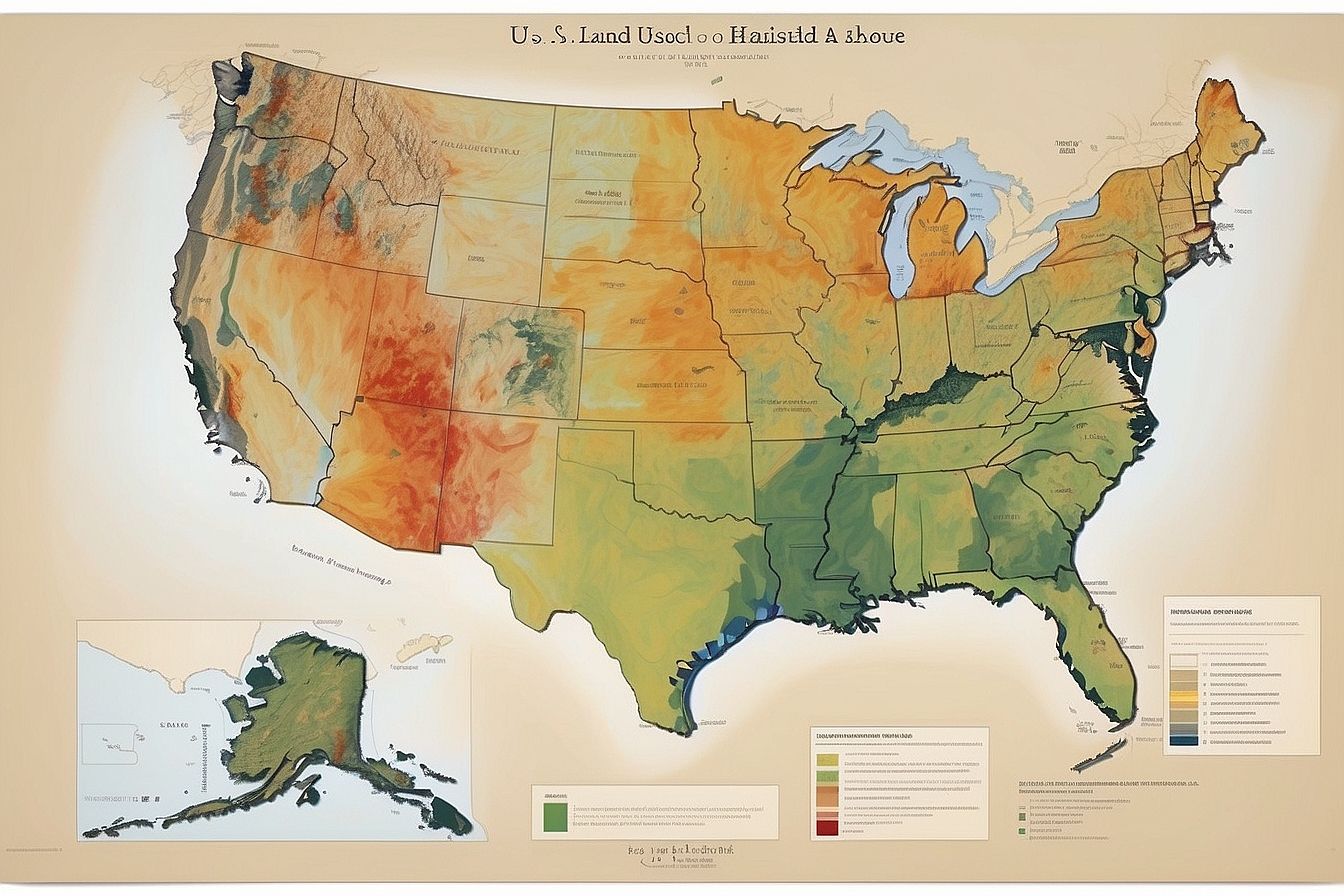We’re all keenly aware of the toll that careless land use has taken on our beloved Earth. Like you, we share a profound concern and are passionately seeking out sustainable alternatives—astonishingly, a quarter of our world’s surface is now battling degradation.
Our blog takes a deep dive into how adopting principles of a circular economy can breathe new life into these weary lands. Join us as we explore transformative methods together, right from this very starting point!
Key Takeaways
- Land is a vital resource that retains ecosystem services like clean water, fertile soil, and wildlife habitats; circular economy practices help preserve these services.
- Circular practices in land management reduce waste and pollution which supports natural resource conservation including sustainable agriculture and forestry.
- Adopting renewable materials usage and recycling helps maintain land potential for future generations, ensuring the earth’s resources aren’t depleted.
- Sustainable land use involves promoting regenerative farming methods to enhance soil health, conserve water, and increase biodiversity through agroforestry systems.
- Implementing circular economy principles in our relationship with the land can lead to healthier ecosystems, higher crop yields, and stronger rural communities.
Land as a Critical Resource in the Circular Economy
Land plays a crucial role in the circular economy by maintaining ecosystem services and providing natural resources for sustainable land use. Integrating circular practices in land management is essential for creating a more sustainable environment.
Role in maintaining ecosystem services
We play a crucial role in safeguarding the ecosystem services provided by land. These services are fundamental to life; they include clean water, fertile soil, and habitats for wildlife which all support biodiversity and help balance our climate.
By adopting circular economy strategies that prioritise reuse and refurbishment of biological resources, we contribute to the preservation of these vital functions.
Sustainable land management goes hand in hand with environmental sustainability and resource conservation. Through practices like recycling organic waste into compost or engaging in sustainable agriculture, we ensure that natural capital – the world’s stock of natural resources – continues to provide for future generations without depleting them today.
Now let us turn towards how integrating circular practices can further enhance sustainable land use.
Integration of circular practices for sustainable land use
By integrating circular practices, we can ensure sustainable land use that supports the preservation of natural resources and promotes sustainable agriculture and forestry practices.
Implementing principles of the circular economy in land management allows for the reduction of waste and pollution, as well as the efficient use of renewable materials to enhance soil health and overall resource efficiency.
This approach supports sustainable land restoration, bioeconomy development, and resource recovery. By incorporating these practices, we can improve soil and land management while meeting the demand for resources in a more environmentally friendly manner.
Circularity practices play a crucial role in transitioning towards a more sustainable approach to land use. It involves optimising resource utilisation through recycling, reusing secondary materials, and minimising waste generation to achieve sustainable outcomes.
Benefits of Incorporating Circular Economy Principles for Land Use
By incorporating circular economy principles for land use, we can reduce waste and pollution, preserve natural resources, and promote sustainable agriculture and forestry practices.
This will ultimately lead to a more sustainable and resilient ecosystem for future generations.
Reduction of waste and pollution
Circular economy principles contribute to the reduction of waste and pollution, promoting a more sustainable use of land as a vital resource. Implementing practices like recycling, reusing materials, and adopting renewable resources minimises the generation of waste while lessening environmental pollution.
By integrating circularity into land management, we actively work towards preserving natural resources and ecosystem services, thereby mitigating the detrimental impact on our environment.
Through sustainable land management strategies that prioritise waste reduction and minimised pollution, we foster a healthier ecosystem while supporting long-term environmental conservation.
Preservation of natural resources
By reducing waste and pollution, we ensure the preservation of natural resources. This means safeguarding vital elements like water, air, minerals, and biodiversity. Embracing circular practices is crucial as it allows us to maximise resource efficiency while minimising environmental impact.
It involves reusing and recycling materials to keep them in circulation for as long as possible, conserving precious natural resources such as land potential and raw materials.
To achieve sustainable land use, we integrate principles that promote responsible extraction of minerals from the earth’s crust. This approach ensures that we mine land potential in a way that safeguards its value for future generations.
Promotion of sustainable agriculture and forestry practices
To support the preservation of natural resources, we actively promote sustainable agriculture and forestry practices. This involves embracing regenerative farming methods that aim to enhance soil health, reduce chemical inputs, and conserve water resources.
By integrating agroforestry systems, we can maintain biodiversity while improving land productivity. Additionally, implementing sustainable forest management techniques ensures the long-term viability of our woodlands and contributes to carbon sequestration.
Furthermore, advocating for sustainable land use practices can lead to healthier ecosystems, increased crop yields, and more resilient agricultural communities. Embracing agroecological principles not only supports environmental conservation but also fosters economic growth within rural areas by promoting a circular economy approach to land management.
Conclusion
Incorporating circular economy principles for land use is crucial in maintaining ecosystem services and promoting sustainable practices. By reducing waste and pollution, we can preserve natural resources and support sustainable agriculture and forestry.
It’s time to mine the potential of our land as a critical resource in the circular economy. Let’s embrace these practices to meet resource demands while minimising environmental impact.
FAQs
1. What does ‘land as a resource in the circular economy’ mean?
Land as a resource in the circular economy refers to utilising land effectively and sustainably, so we meet our present needs without compromising future generations.
2. Why is it important to consider land use in the circular economy?
Considering land use is vital because it helps us reduce waste, manage resource demand more efficiently, and protect our environment for continuous reuse.
3. Can mining be part of the circular economy approach?
Yes, by following sustainable practices and restoring environments post-extraction, mining land potential can align with circular economy principles.
4. How does using land responsibly support the circular economy?
Using land responsibly supports recycling materials and reducing unnecessary consumption; this keeps resources in a constant flow, lessening our impact on natural lands.





